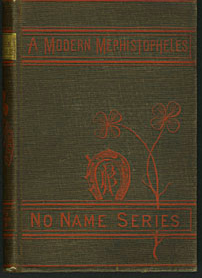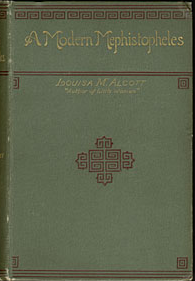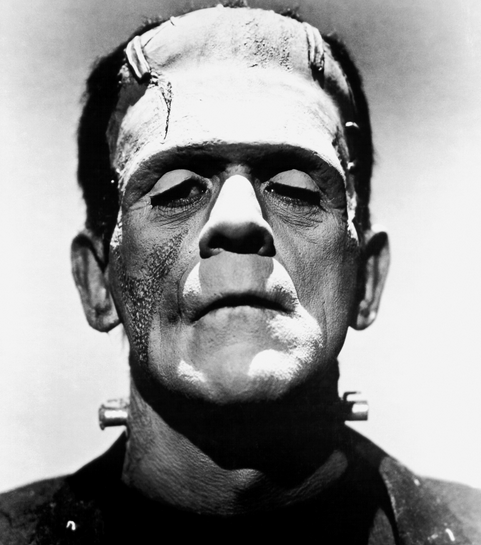
I'll keep this updated with lecture notes and other items related to our class discussion.
In this top section you'll find handouts; beneath you'll find links and information related to our texts, with the most recent stuff at the top.
The Syllabus for the course is here.
The Discussion Starter Assignment is here -- check the sign up sheet in class to see when yours are due.
The First Paper Assignment is here. It is due Thursday, February 18th.
Here is a link to the Second Paper Assignment. It is due on Tuesdsay, March 29th. Go here for Suggested Links for the paper. Here is a link to the images that everyone is working on for their paper.
Here is a link to the Final Project Assignment; presentations in the last week of class and paper due during finals. Are you still looking for a book? Need help finding something? Try this terrific "How to tell if you're reading a gothic novel -- in pictures" from the Guardian.
_______________________
for Jekyll & Hyde
Here are the notes for the discussion of Jekyll and Hyde.
There's a great article in the Atlantic (1994) about Stevenson and his critical reception.
_______________________
for A Long Fatal Love Chase
The publication history on this one is a sort of Gothic novel in itself! Alcott wrote (very quickly!) a serial story called A Modern Mephistopheles, or The Fatal Love Chase. She initially wrote it for publication (intended to be serialized) in The Flag of our Union, a Boston-based paper. Villanova Library provides access to original scans of this paper.The editor rejected it ("too long & too sensational"). She seems to have revised portions of it, but also peeled out portions or ideas to move into other stories. It appears that she at some point intended the new title to be Fair Rosamond, but ultimatlely called the novel A Long Fatal Love Chase. She then also titled another novel A Modern Mephistopheles. Alcott frequently wrote her more sensational stories (including this one) under the pen name of A. M. Barnard.
Alcott published A Modern Mephisopheles in 1877 in the "no name" series (i.e., her name was not associated with it!):

And then it was puhblished under her own name (after her death) in 1889:

Alcott is probably most well known for her hugely popular novel, Little Women (1868). You can visit Orchard House, where she lived, in Concord Massachusetts.
Stephen King wrote a terrific review of Love Chase for the New York Times when it was first published in 1995. Here's the opening few paragraphs:
HOW much has the suspense novel -- subgenre "woman stalked/woman in peril" -- changed over the last 130 years or so? Well, consider: during the summer of 1992 I wrote a novel in which a woman named Rose leaves her violent, mentally unstable husband and flees to another city. Here she is taken in at a women's shelter and begins to build a new life. She also meets a much gentler man who falls in love with her. While all this is going on, her obsessed husband is hard at work, tracking her down.
In 1866, Louisa May Alcott wrote "A Long Fatal Love Chase," a novel in which a woman named Rose leaves her violent, mentally unstable husband and flees to another city. Here she is taken in at a women's shelter (a convent, in the Alcott version) and begins to build a new life. This life includes a much gentler man who falls in love with her. (That he happens to be a priest was only one of the problems Alcott had with the subject matter of her book.) While all this is going on, her obsessed husband is hard at work, tracking her down.
There are, of course, many differences between these two books, but the similarities are striking. So are the ironies. One is that, although written 125 years later, mine was published first, and in an edition of almost two million copies. It was reviewed respectfully (if not always favorably). Louisa May Alcott's version of Rose on the run, on the other hand, wasn't published at all. "I like horrible books if they have power," remarks a character in "Love Chase." It was not, apparently, a feeling shared by anyone at Roberts Brothers, Alcott's Boston publishers.
Mephistopheles is a character who appears in German folklore, and is probably most well-known as the demon who appears in the Faust story.
Rose is upset after reading The Wandering Jew, an 1844 novel by Eugene Sue. Link to an early edition here. We've already met the Wandering Jew in previous novels; he shows up in numerous places. The Wandering Jew is another mythical figure; his appearance dates back to the 13th century, and he shows up in a wide array of literature.
_______________________
____________________
for Vampire Week!
This week we're reading Polidori's The Vampyre and Theophile Gautier's "The Beautiful Dead." I e-mailed copies to you in PDF form and handed them out in class. E-mail me if you need either of these!
My notes for brief background on vampire tales.
There's a good article about Polidori's The Vampyre here; it includes images of the key figures (Polidori, Byron, etc.)
____________________
for Frankenstein
OK, first things first: by taking this course, you are promising that you will never ever call the creature in the novel "Frankenstein." This:

is not Frankenstein. The dude who MADE the creature is Frankenstein. You are also obligated to correct friends and family who make this eggregious mistake. :) Also, this is important:
The Philosoraptor makes an excellent point.
Cover images for various editions of Frankenstein.
Some images of Frankenstein in popular culture.
Mary Shelley's family life was a bit of a mess. Check out her family tree. (link to an excellent wikimedia resource).
The Bodlein Library has an excellent resource called Shelley's Ghost: Reshaping the Image of a Literary Family. It includes a draft of Frankenstein.
Here are the notes and images for the discussion of Frankenstein and Body Issues.
____________________
for Brown's "Somnambulism"
I did give you a hard copy of this in class, but you can get a PDF of the story here: http://faculty.etsu.edu/codym/Somnambulism.pdf
Here are some notes on sleepwalking and murder!
"Somnambulism" was originally published in a magazine; if you'd like to see what it would have looked like to early readers, take a look here: http://brockdenbrown.cah.ucf.edu/media/images/1805-05335-335.jpg The Charles Brockden Brown Electronic Archive and Scholarly Edition has tons of great stuff for background on Brown and his other works.
__________________
for St Herbert
I did give you a hard copy of this in class, but you can get a PDF of the story here: http://jto.common-place.org/st-herbert-a-tale-1796/
The Library Company of Philadelphia did a great exhibit on Philadelphia Gothic; they include a page specifically focused on Women writers of American/Philadelphia Gothic, which includes "Anna," the anonymous author of St. Herbert.
____________________
We'll need to talk a bit more about ROMANTICISM versus GOTHIC.
We may also talk a bit about the timeline of the Gothic. The BBC has a terrific Gothic timeline here.
Here's some info about the cover image for our (Dover Thrift) edition.
There are three known portraits of Lewis, found at the National Portrait Gallery.
If the novel itself isn't wacky enough for you, you may be interested in a series of six tableaux vivants based on The Monk created by Antonin Artaud, which you can see here. The images date from the 1930s, and were intended as a first step towards a film; he abandoned the project but did produce his own translated version of the novel in French. It was a *very* loose translation, with many major cuts (his version is about half the length of Lewis's original!).
_____________________
A side note: Walpole is responsible for the lovely word "serendipty." He coined it on January 28th! It was a serendipitous discovery, so that's why I mention it. (More authoritative source here.) He's also responsible for "gloomth," but you may not hear that one as often.
Here are a few notes about Horace Walpole (author of Otranto).
Here's a link to an original copy of The Castle of Otranto at the British Library.
You might be interested in this modern review of the book, which calls it "lurid, sensational, and amusing."
I am charmed by this paper toy theater version of the story from 1841 (as described in the blog of a collector).
_____________________
From the first day:
How do you define the Gothic? What do you think of when you hear "Gothic"?
Here are our 5 different group working definitions from our Day 1 Activity:
1. Mercedes, Tyler, Ben, and Vathana:
Gothic literature is a literary genre typically dealing with taboo or macabre themes, troubled characters, the unknown and paranormal, and the darker aspects of humanity and psychology.
2. Count Chocula: Sam, Megan, Erin, and Liz:
Gothic Novel: A 19th Century novel that is characterized by an air of mystery and romance, based around an overall theme of darkness, often contining a dramatic and ominous setting that contains and unreliable narrator usually in search or in question of his identity.
3. The Van Helsings: Abi, Marysa, Peter, and Derek:
Definition of Gothic: Non-traditional; mysterious; dark/darkside of human nature; stuff that is not mentioned in polite company; internal struggles (fog)/perceived self; duality of good and evil; ominous feeling/setting; own world --> different extremes that don't happen in every day life; bad love stories/love gone wrong.
4. The River Ravens: Meghan, Kirsten, Mitchell,and Mike:
Significant Elements of Gothic Literature: dark, eerie settings, often set in once beautiful places, marked by decay; characters face internal or external struggles against a mysterious, malevolent force; heavy use of suspense and terror throughout; stories often contain taboo themes, violence, and wrongful death.
5. The Nevermores: Kimberly, Marissa, Abram, and Victoria:
A branching genre of literautre often related to dark theme and settings that feature complex and unreliable characters, touching on subjects of the time, with supernatural elements.
Perhaps you've seen the painting, American Gothic, by Grant Wood?
_____________________________________
This page updated April 4, 2016 .